
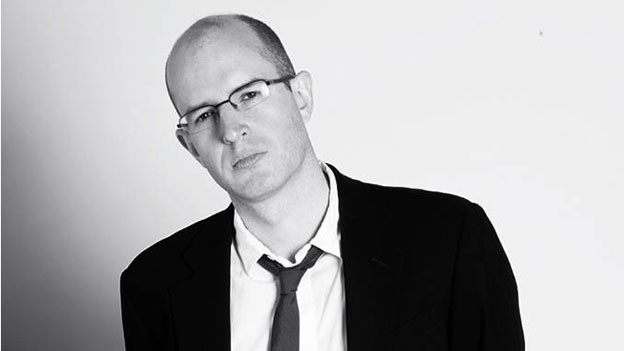
The original Coravin used a needle to inject inert gas into wine bottles, allowing you to pour out a glass or two, yet keeping the wine left in the bottle quaffable for years. The new Coravin Sparkling is arguably even cleverer. Can you guess why? Yep: it keeps sparkling wine – your Champagne, Prosecco, Cava and vintage Lambrini – as fizzy as when you first opened it for up to two weeks. I've been trying it out – it's a bitch of a job, but someone has to do it – and I can confirm that it totally works.
The last year may not have been packed with Champagne moments – unless you were drowning your sorrows – but that hasn’t hurt the sales of fizzy wine. Vintage Champagne and the excellent fizzy wines of England may remain reserved for special occasions, but cheap Champers, Cava and – of courdse – Prosecco, are increasingly brought out on every occasion. Even if the ‘occasion’ is ‘getting home from work, or the shops’. My top tip is Cremant, which is French fizzy wine made outside of the Champagne region. It usually comes in a similarly nice bottle, tastes better, and costs half the price.
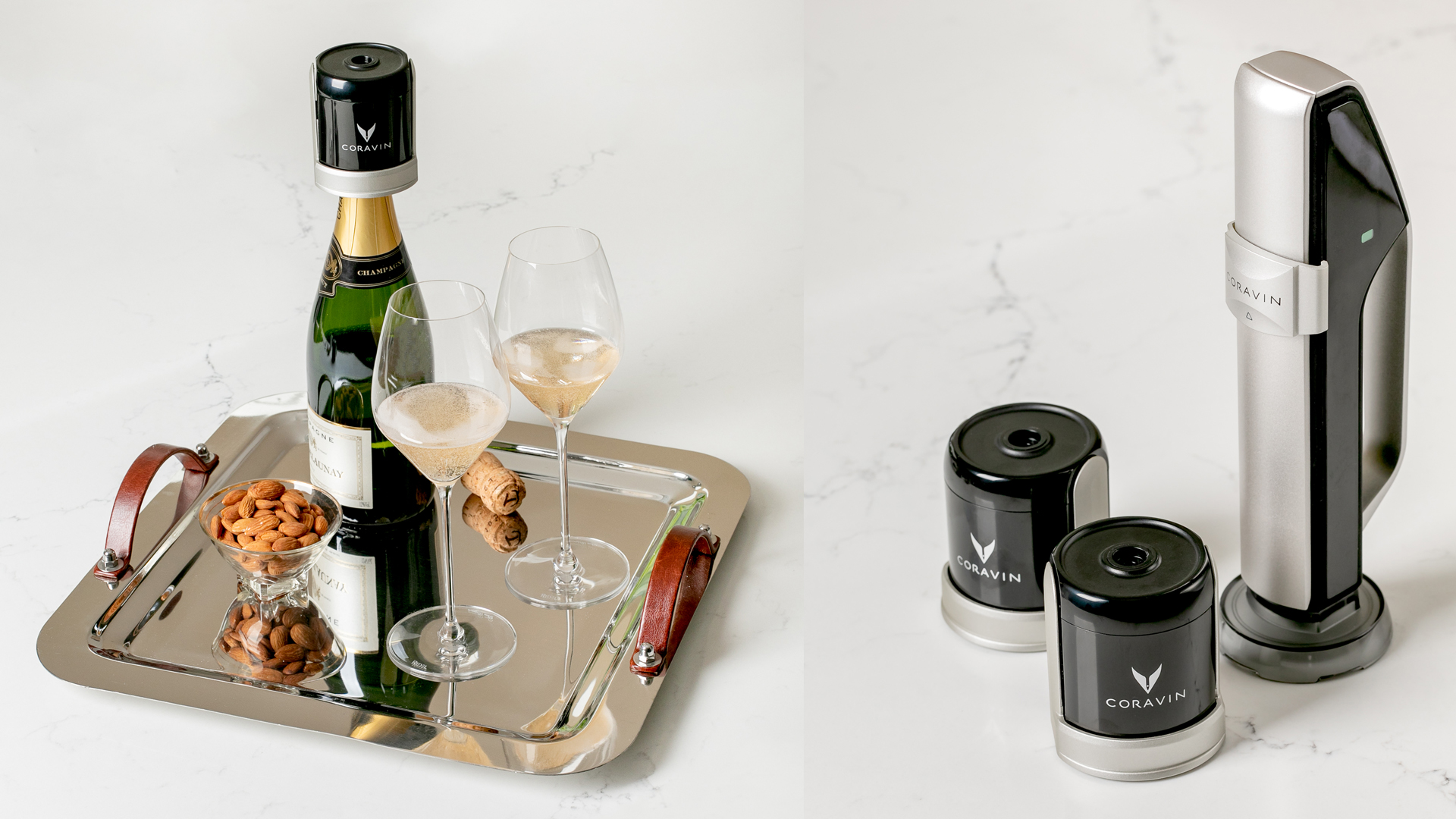
The inventor of Coravin and its new Sparkling sibling is Greg Lambrecht, who is a surgeon. I wouldn't say Coravin is his side hustle so much as an expression of his passion for wine. As part of the process of designing it, he drank his way through 100s of varieties of sparkling wine. Again, it's a tough job, but someone has to make the sacrifice. All that effort has certainly paid off, as Coravin Sparkling can be fitted to any sparkling wine bottle – take a look at the variety of bottle neck shapes in the fizzy section, next time you're in the supermarket, and you'll see this is no mean feat – and pulls off the near miraculous feat of keeping it at its absolute best for a full fortnight. So if you opened a bottle today, it would still be drinkable on National Champagne Day, which is on October 22 as I am sure you're aware.
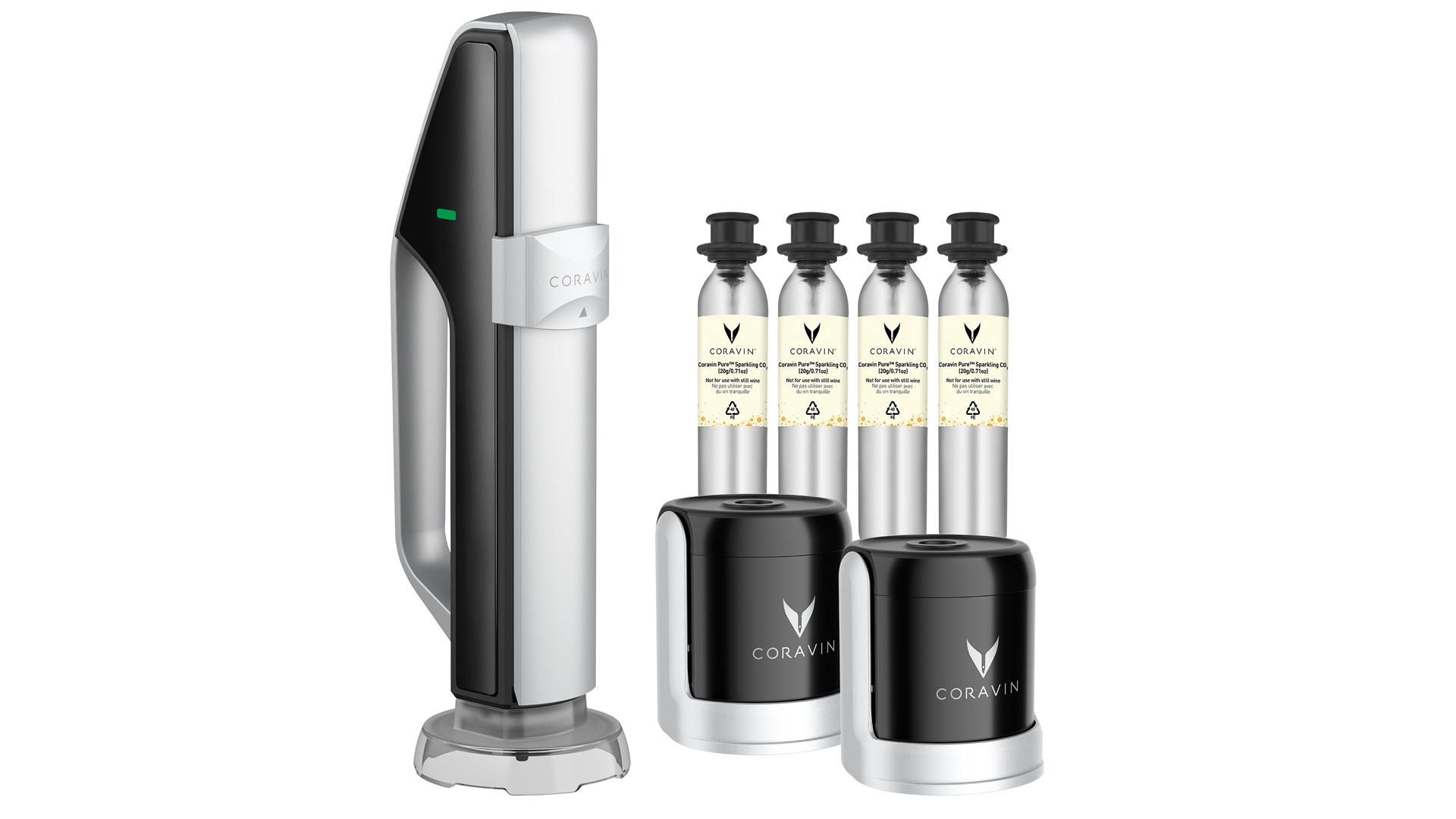
Coravin Sparkling: here's what you get in the box
The only problem fizz has had is that it just doesn’t keep. I used to have a great technique to deal with this. No, it wasn't sticking a spoon in the bottle; that does absolutely nothing. Even vacuum-sealing caps for bottles only extend the life by a day or two, before those effervescent, fun-packed bubbles turn flat and die, just like your dreams. No, my technique was to ensure the fizz was polished off no more than 30 minutes after opening. It worked a treat, to be fair, but Coravin Sparkling has proved to be a much healthier way to ensure fizz doesn't lose its bubbles.
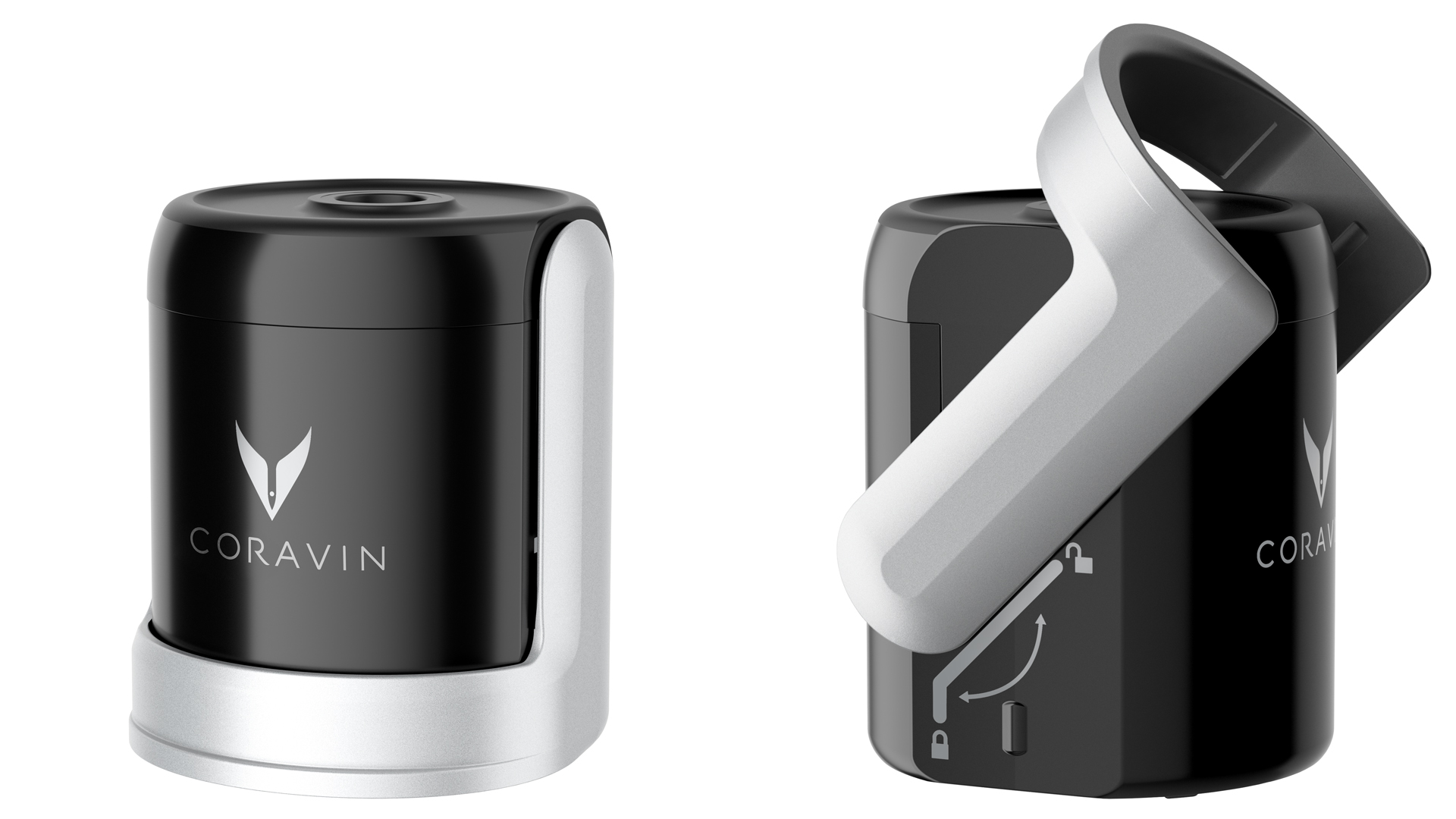
I was slightly fearful when first using the device. I pictured lengthy set-up, followed by a lot of fiddling about, and then my Champagne bottle exploding or imploding due to me pumping in or sucking out too much gas by mistake. How wrong I was.
All you have to do is slip one of the supplied CO2 canisters into the Coravin – there's another reason to be thankful that the UK carbon dioxide shortage has seemingly been averted. You then plonk the bulbous cap on top of your opened wine bottle, with its arm pulled up (right). Then you pull it down to lock it in place. The interior is made of a material so advanced that Greg outright refused to tell me what it was, but whatever it is, it is able to grip any fizz bottle neck in an airtight embrace. Interestingly, one thing it definitely isn't made of is silicone, as apparently this is totally unsuitable for sealing in CO2. Who knew, right?
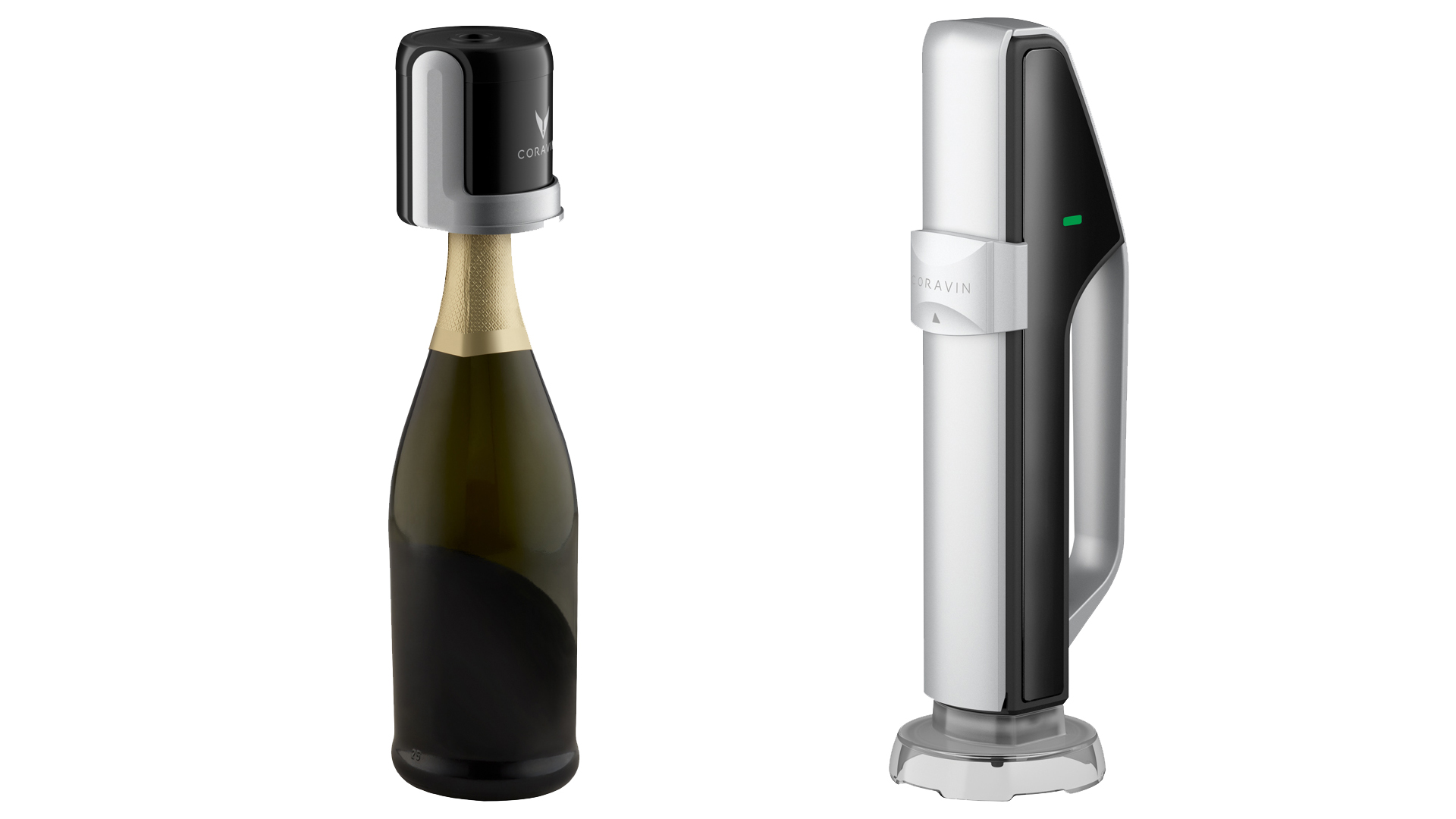
Coravin Sparkling may remind you of a more space-age version of Vacu-vin, mais non; it’s significantly different. While Vacu-vin is a very fine device that sucks excess air out of the bottle, Coravin Sparkling pumps carbon dioxide in.
Sign up to the T3 newsletter for smarter living straight to your inbox
Get all the latest news, reviews, deals and buying guides on gorgeous tech, home and active products from the T3 experts
You simply plonk the handheld… thing on top of your cap and push it down. That's it. In a matter of seconds – or slightly longer as the bottle gets drunk and there's more empty space to fill – Coravin Sparkling pumps in exactly the right amount of CO2 to maintain optimum carbonation. This is true regardless of the fizz level of the drink you're resealing, and is achieved by, erm, science. Greg did explain it to me, but I zoned out a bit.
Whatever the art behind it, the most important thing to know about Coravin Sparkling is that it bloody works! I opened a bottle of M&S Baron de Marck – classy, right? – had a glass, then sealed it with the Coravin and locked it away so my other half couldn't surreptitiously polish it off. Re-opened after a week, it tasted good as new. After a fortnight? Still box fresh. And even after 3 weeks, there was still a very decent quantity of bubbles and it was perfectly drinkable, although clearly on the slide slightly by that point. Still, a fortnight is plenty.
As an interesting aside, Greg also said that you could use Coravin Sparkling like a boozy SodaStream to carbonate any wine – although this would take a number of hours, so maybe stick to using an actual SodaStream for that.
Coravin Sparkling is great for anyone wanting to savour a great bottle of sparkling wine, rather than guzzling it like some kind of effervescent wino. It's also a superb option for anyone in the restaurant trade. Coravin's Greg Lambrechts waxes lyrical over the way it makes possible fizzy tasting menus, based on pairing a different sparkling wine to every course.
The price of the Sparkling might be on the high side, but if you are a regular fizz quaffer it can only be a wise investment. Cheers! Hic.
• Coravin Sparkling costs £399, with a pack of four additional CO2 capsules costing £44.99. Shop the range now! In the USA it's $399 and in Australia it's AU$699
Duncan is the former lifestyle editor of T3 and has been writing about tech for almost 15 years. He has covered everything from smartphones to headphones, TV to AC and air fryers to the movies of James Bond and obscure anime. His current brief is everything to do with the home and kitchen, which is good because he is an excellent cook, if he says so himself. He also covers cycling and ebikes – like over-using italics, this is another passion of his. In his long and varied lifestyle-tech career he is one of the few people to have been a fitness editor despite being unfit and a cars editor for not one but two websites, despite being unable to drive. He also has about 400 vacuum cleaners, and is possibly the UK's leading expert on cordless vacuum cleaners, despite being decidedly messy. A cricket fan for over 30 years, he also recently become T3's cricket editor, writing about how to stream obscure T20 tournaments, and turning out some typically no-nonsense opinions on the world's top teams and players.
Before T3, Duncan was a music and film reviewer, worked for a magazine about gambling that employed a surprisingly large number of convicted criminals, and then a magazine called Bizarre that was essentially like a cross between Reddit and DeviantArt, before the invention of the internet. There was also a lengthy period where he essentially wrote all of T3 magazine every month for about 3 years.
A broadcaster, raconteur and public speaker, Duncan used to be on telly loads, but an unfortunate incident put a stop to that, so he now largely contents himself with telling people, "I used to be on the TV, you know."

